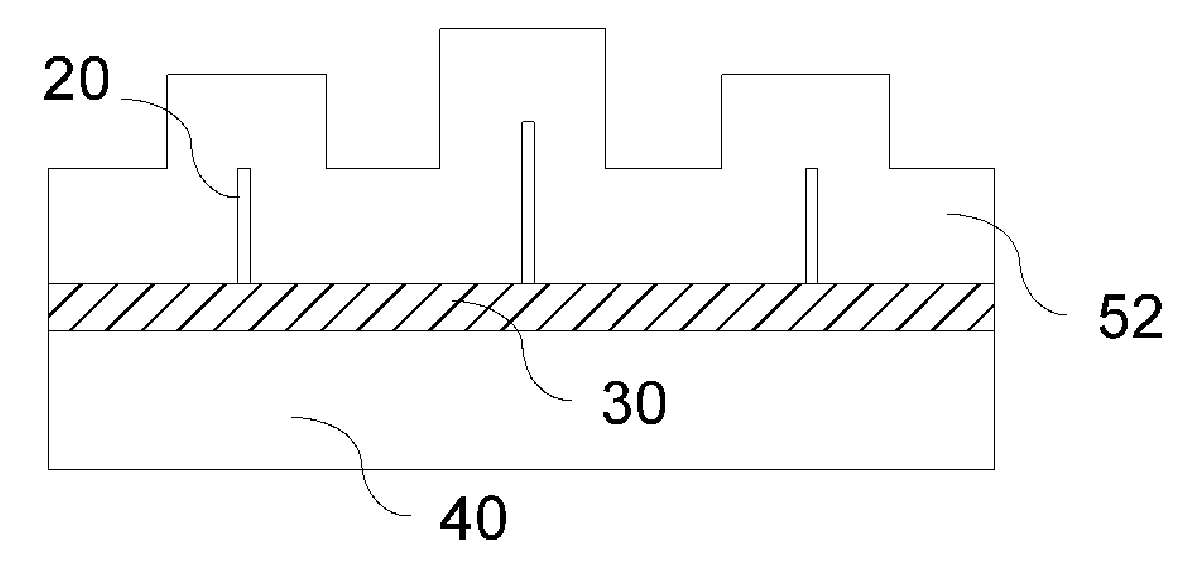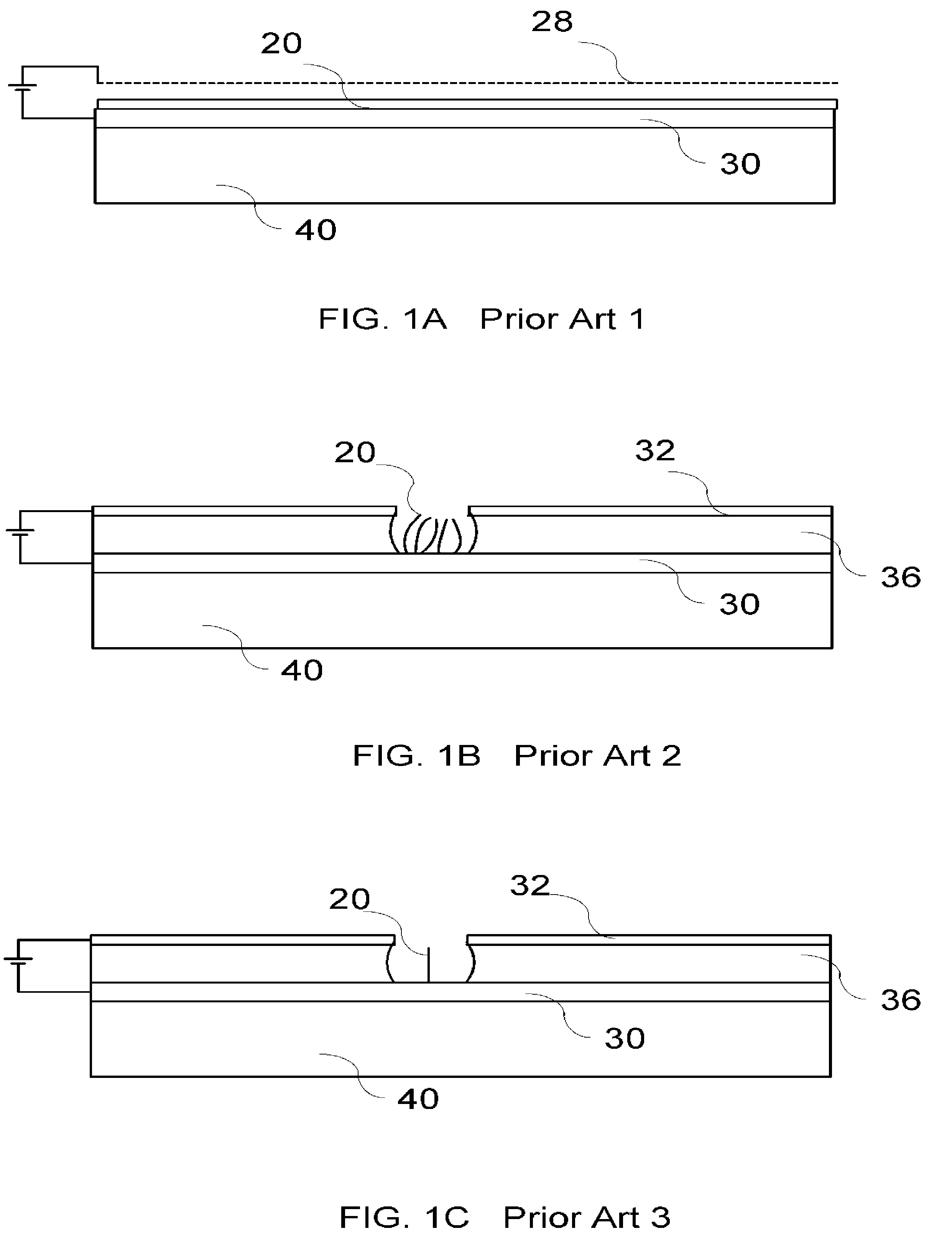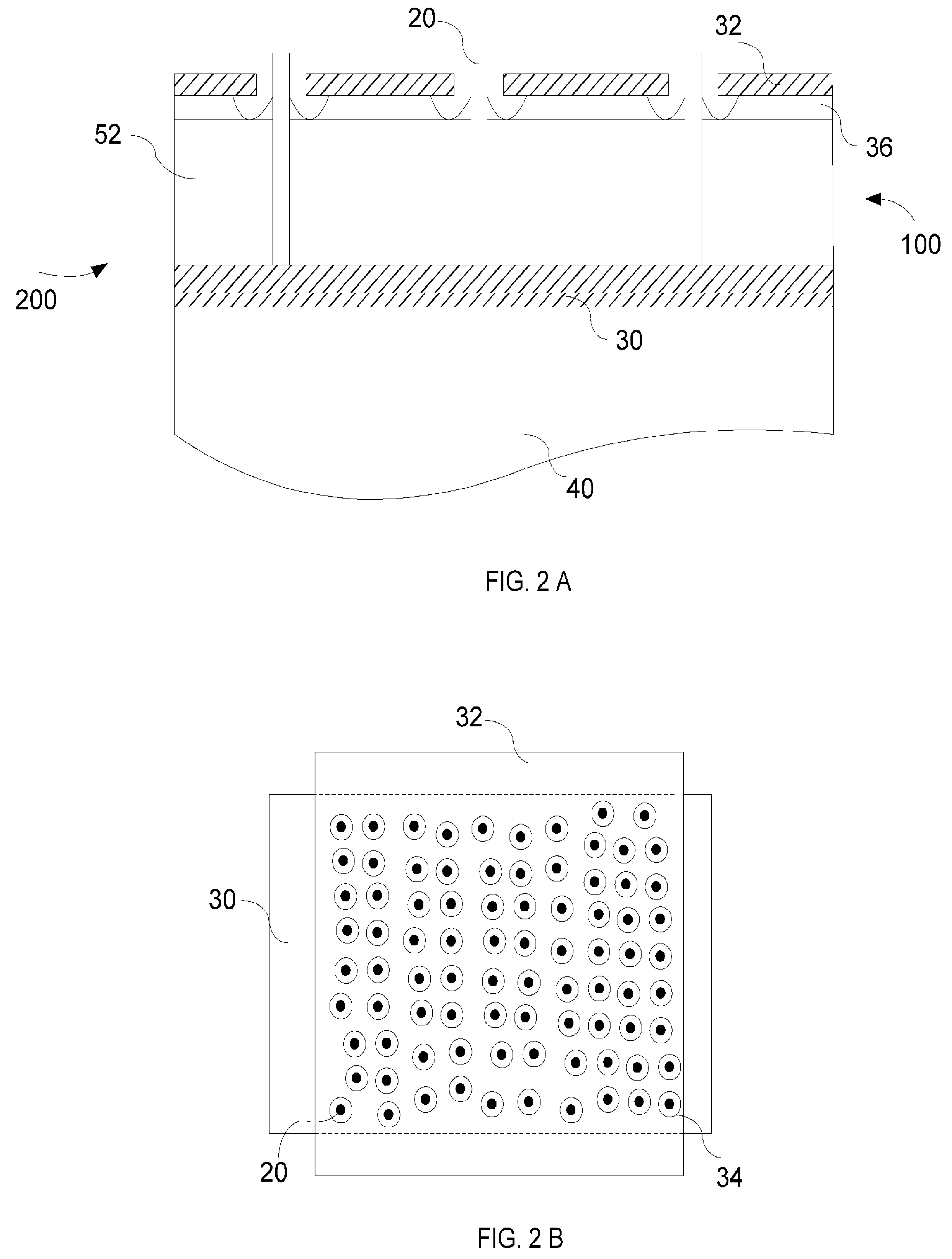[0020]It is the objective of the current invention to: a) provide a method to fabricate a self-aligned gate aperture with a
diameter on the order of 100 nanometer around each vertically oriented CNT and with equal distance to each CNT; b) provide a method for controlling CNT growth over large area so that they are mono-dispersed, with a narrow distribution in
diameter, and, furthermore, the spacing between them is large enough to enable a gate aperture around each CNT and yet small enough in order that the emitter density can be as high as 108 / cm2; and c) provide a means for enabling favorable
wide band gap
semiconductor nano-structures to be utilized as field emitters.
[0021]It is another object of the invention to provide an
electron source using a vertically oriented and mono-dispersed nano-structures that: a) has emission properties which can be modulated with a
low voltage, b) has a high emission site density, c) emits uniformly over large area, d) generate a highly collimated electron beam, e) has
high energy efficiency, f) is robust to
ion bombardment and
chemical attack, and g) is easy to fabricate with high production yield.
[0024]Self-alignment of an aperture on the order of 100 nm in
diameter, as is described in the current invention, means the location where the vertically oriented CNT is grown or assembled can be random and needs not be predetermined. The spacing between CNTs, in this invention, may be as low as one
micrometer or less. Therefore, two orders of magnitude higher emitter density over prior art is possible and advantages can be taken of CNT growth or
assembly controlling processes that don't require expensive and complicated
lithography.
[0025]One of such enabled embodiments is to use an
ion-track-etched membrane as a
hard mask for patterning catalyst before CNT growth. Preferred membranes are those with a pore density about 1×108 pores / cm2 and pore sizes from 20 to 150 nm. It is known that for CNT growth, its diameter and the inter-tube spacing are determined by those of catalyst, provided the catalyst size is less than 200 nm. Catalyst deposition through an
ion-track-etched membrane with chosen pore size and density will produce an array of catalyst dots with substantially
uniform size and desirable inter-tube spacing.
[0026]The advantages of using the ion-track-etched membranes as a
shadow mask for catalyst deposition include: a) pore size and density are in the most desirable range and are highly controlled, b) inexpensive, widely available, and come in sizes particularly suitable for large
flat panel display applications, and c) it is easy to apply them to a
substrate surface as a
shadow mask and they can be recycled in production, provided the catalyst is removed after each deposition.
[0030]In accordance with the current invention, the gate aperture will always be perfectly aligned with the emitter, and the distance between aperture and its emitter will be substantially the same over the entire
substrate surface, on the order of 100 nm, and controllable by the thickness of the
gate insulator. And, all the emitters have substantially the same length and diameter. A gated field emission
electron source with these characteristics provides an
extra low voltage modulation, uniform emission over large area, and low
energy loss from
gate current. Since the emitter is largely embedded in a
dielectric, it is mechanically and chemically protected and, to some extent, shielded from
ion bombardment, giving rise to a longer lifetime and steadier electron emission. With a proper selection, the embedding material can also enhance the
thermal conduction from the emitter. When a
dielectric is used as the embedding material, the relatively large gap between the
cathode and the gate electrodes also reduces the occurrence of a short circuit between them and the capacitive
energy consumption during the emission modulation, resulting in a higher production yield and higher energy efficiency. An array of emitters with a density as high as 108 / cm2 will produce a more homogeneous emission compared to those of low emitter density.
 Login to View More
Login to View More  Login to View More
Login to View More 


